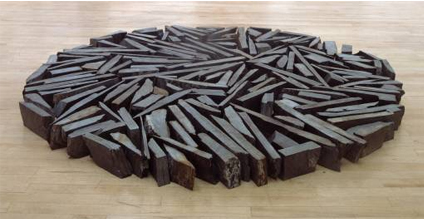Dry Walk is exemplary Richard Long, simple verging on banal, just 17 printed words on a large framed sheet of immaculate white paper: ''Dry Walk / 113 walking miles / Between one shower and the next.'' Well, it's an alternative to Wimbledon. Long's work has a take-it-or-leave-it quality. Devotees may value Dry Walk as a haiku-like distillation of man's relationship with the natural world. The more cynical may prefer to regard it as failed poetry aggrandised by context.
The context is ''Richard Long'' at the Hayward Gallery, a large exhibition which provides the closest thing yet to an Ordanance Survey map of his art. Long was awarded the Turner Prize the year before last but did not pick it up in person because, it was said, he was otherwise engaged ''in the landscape''. Absenteeism is an important aspect of his work. He assiduously seeks to suppress all traces of personality in his art.
Long's text pieces can document actions or places or simply provide rudimentary lists of sensory experiences, while his sculptures, whether made in the art gallery or transplanted there from far-flung locations in the form of photographs, employ archetypally basic structures. He occasionally leaves fingerprints - notably in the large, concentric circles left by his own, mud-dipped hand on the wall of the Hayward - but rarely provides clues to his state of mind.
A carpet of flints; a circle of slates; a circle of peat slabs: the builder who wrote to The Independent re-cently, complaining that he couldn't tell the difference between a Richard Long and his own crazy paving, had a point but missed the main one. Of course he could make something virtually indistinguishable from a Long floor piece (although it would not be a piece of crazy paving), but it is important to Long...


